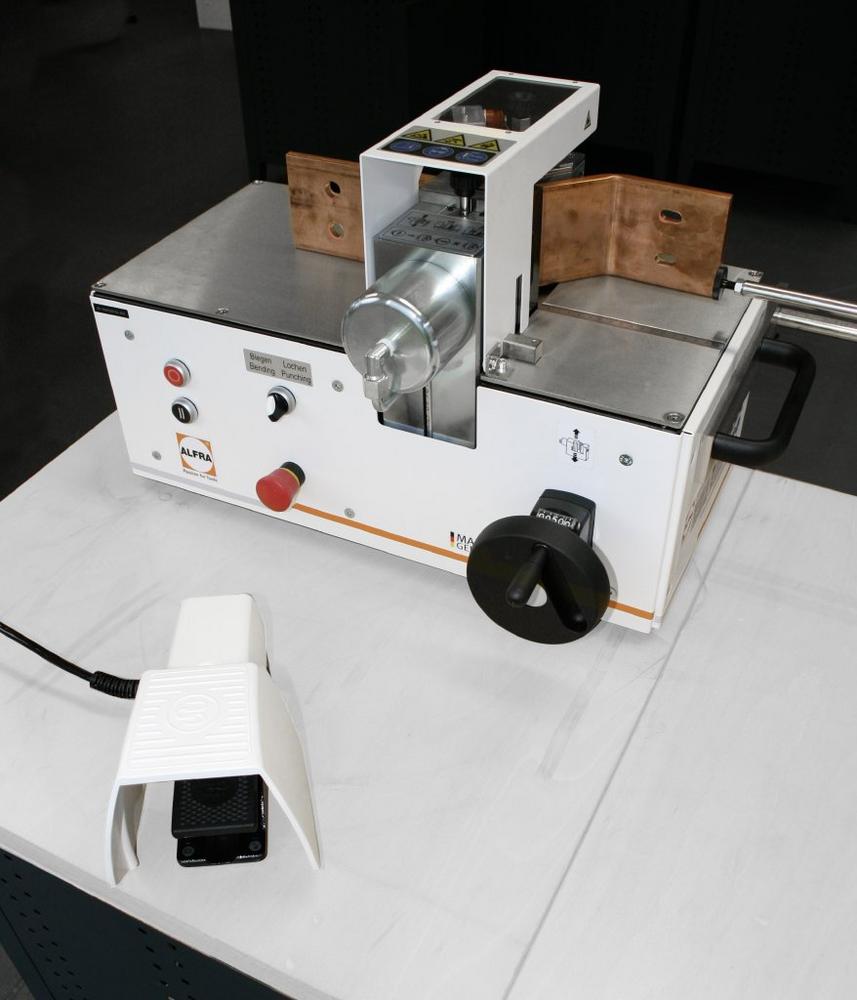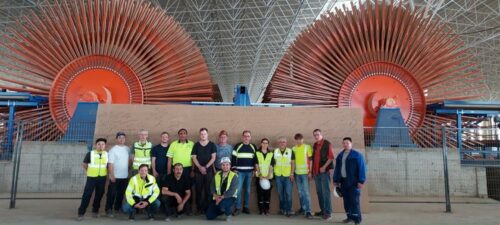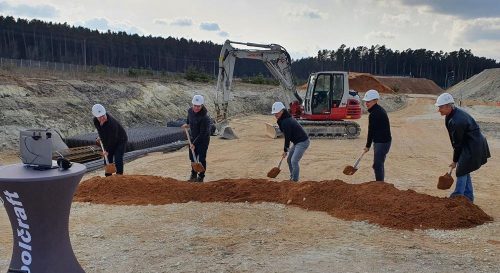
Bending, Cutting, Punching
Those who invest in occupational safety do not merely cultivate their image towards their own employees. The reputation among customers also increases. Larger companies in particular are including factors such as sustainability and occupational safety in their purchasing decisions. "That is one of the reasons why we are constantly developing our products, also from a safety point of view," confirms Klaus Pfeifer, technical manager at Alfra. For the customer, however, there are also tangible financial benefits. According to a study by the Justus Liebig University in Gießen, every Euro invested in occupational safety brings a "Return of Prevention" (ROP) of 1.60 Euros. This figure, which was determined for Germany with regard to the costs and benefits of corresponding measures, becomes even more vivid when it is seen against the background of the damage caused by an occupational accident. Even in the case of a comparatively less serious event, such as a sprained ligament as a result of a fall, the employer incurs costs of around 4,500 Euros for a sick leave of 2 weeks, which must be compensated by higher turnover. Everyone can work out the economic consequences in the case of possibly permanent health impairments, for example due to cuts.
"This is precisely why our S 125 busbar cutter, for example, now has an effective hand protection. On the right and left side of the device, there is a Plexiglas partition shielding the blade in the cutting area," explains Pfeifer. The user can no longer reach into the area and is protected from injury. The special safety foot switch is serving the same purpose. On the one hand, this enables convenient operation by foot, and on the other hand, the switch mechanism is stopping the machine immediately in an emergency situation. "Experience shows that employees at the machine tend to depress the foot switch down completely in reflex, rather than pulling their foot out of the switch to interrupt the process. That is why this design is particularly reasonable," he emphasizes.
Millimetre work saves time and effort
The Hockenheim tool manufacturer is just as conscientious in keeping an eye on the processes in the everyday work of its target group. In order for busbars to fit perfectly into the control cabinet, the control cabinet builder has to cut them exactly to size and bend them at the right angle. Precise perforations ensure that individual modules can be screwed to the rail and several busbars can be connected to each other.
"Our products are designed to save the users time and effort," says the technical manager. The hydraulically operated S 125 conductor rail cutter e.g, is cutting rails measuring 125 x 12 millimetres to length precisely, centrically and without waste – thanks to the hold-down clamp and practical guide device, there is no play that could affect the cutting result. The heart of the machine is the resharpenable and replaceable upper blade. It convinces with a cutting time between 5 and 15 seconds, depending on the bar width and the hydraulic unit used.
The Alfra busbar bending device makes bending electrical conductors effortless – thanks to the bending die with movable jaws and electric angle reader. "Bending angles of up to 90 degrees are possible," says Klaus Pfeiffer, technical manager at Alfra. "We recommend setting 1 to 3 degrees beyond the desired degree, depending on the material thickness, as copper springs back," he adds. With the available oblong and round punch with die, the user is working with pinpoint accuracy.
Here, too, new features ensure that risks of damage to people or machines are minimized: The hydraulic hose and electrical control cable for the BS 120 busbar bending and punching unit, are now contained in a sturdy protective hose. This fixture not only serves to prevent damage, but also ensures clean cable routing.
Busbar machining on wheels
The 4-station processing trolley from Alfra offers a total of four workstations in busbar processing. This is because, in addition to the bending, punching and cutting functions, it has two additional hydraulic outlets for various applications – for example, to connect an additional cylinder or a tool for hexagonal pressing. Another advantage: because the tools are integrated in the trolley, they are at the same working height, which is comfortable and ergonomic for the user. Contact-protection and hold-down devices make it easier for control cabinet builders to process busbars precisely and safely at the mobile and compact station – as does an emergency stop switch on both sides of the trolley. In addition, the manufacturers have improved the entire structure of the hydraulics.
The 4-station trolley is also equipped with a foot switch with emergency stop function, which stops the pump driving the machine when it is fully pressed down.
Conclusion: Alfra equipment offers busbar processing functions for every requirement – for smooth and safe processes in control cabinet construction.
Alfra manufactures and sells devices and tools for punching and drilling metal with a material thickness from 0.8 mm to over 100 mm. Also part of our product world are application solutions from the magnet and lifting technology. Furthermore, we offer special solutions for projects, such as small series or prototypes.
Hockenheim is one of three locations where we are producing quality "Made in Germany". Other plants in Berlin-Stahnsdorf and Herborn represent our 85% share of in-house production.
Our engine: Teamwork for our customers. The fuel: passion. This is why our dealer network ensures that Alfra products make users in more than 120 countries happy.
Alfra GmbH
2. Industriestrasse 10
68766 Hockenheim
Telefon: +49 (6205) 3051-0
Telefax: +49 (6205) 3051-150
http://www.alfra.de
Marketing
Telefon: +49 (6205) 3051-171
Fax: +49 (6205) 3051-150
E-Mail: hasslinger@alfra.de
![]()




